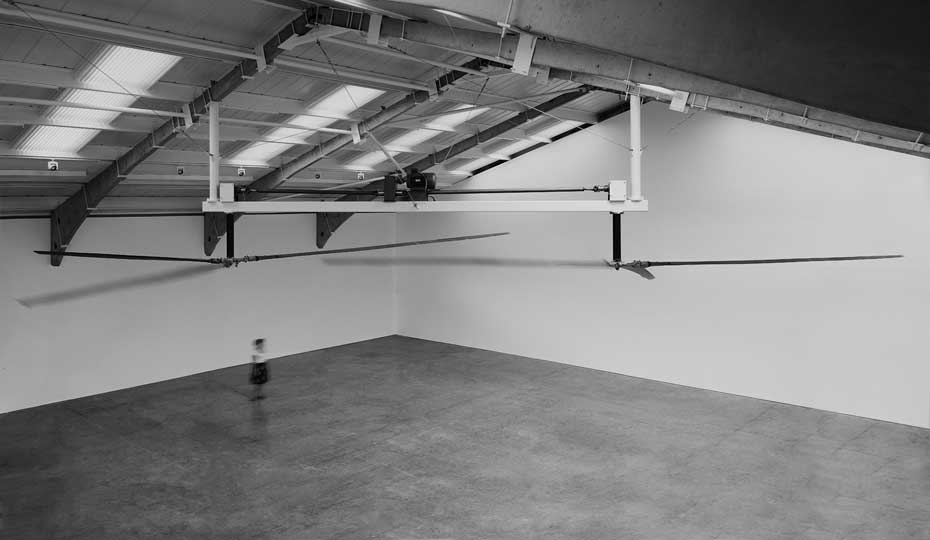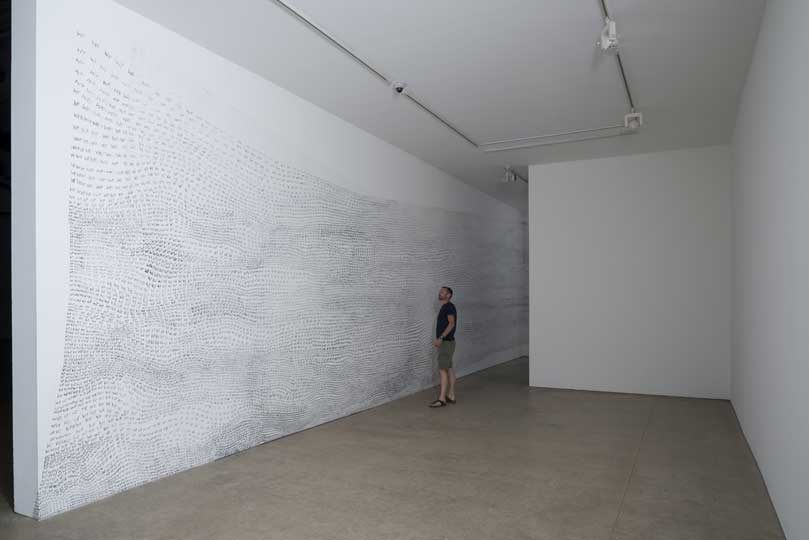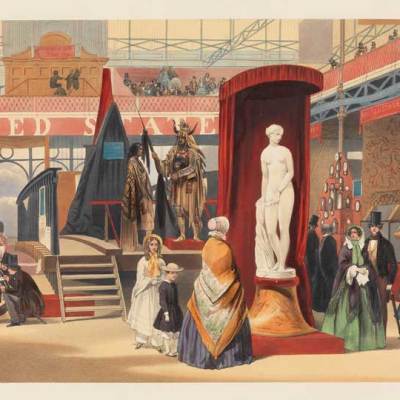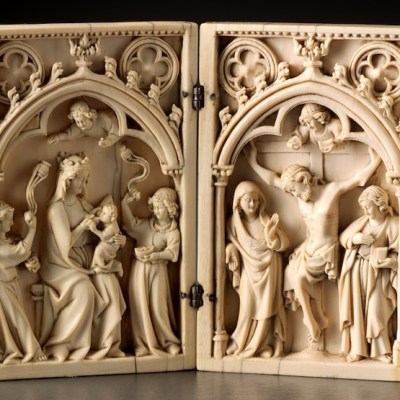If you’ve never stood directly beneath the moving rotor blades of a Chinook helicopter, I strongly suggest you try it. And when you do, I dare you not to duck and run.
This is what I found myself doing last week when I visited Wp Wp Wp, Fiona Banner’s new exhibition at the Yorkshire Sculpture Park. Banner has fixed the twin set of gigantic Chinook blades to the ceiling of one of the Sculpture Park’s indoor galleries. It’s quite a feat of engineering: it took a year of preparation and a team of specialists from a mix of disciplines to ensure the building would not collapse with the strain.
Switched off, the blades have all the character of outsized ceiling fans. But as soon as the hidden motor whirrs them into action, they become something else entirely. The moment they swing lazily into motion, you’re struck silent by the sense that something awful is about to happen. Banner has captured cinema shorthand for menace and divorced it from any narrative context.
The blades scythe faster and faster in opposite directions, beating up to a speed where they are no longer distinguishable. It seems impossible that the thin spokes to which they are attached can hold them steady much longer. This was the moment when I made a break for the exit. But just as they have sped into a vortex, they wind down again. You gasp with relief.
To borrow a phrase beloved of the United States Military – the Chinook’s primary user – the effect is one of shock and awe. It continues Banner’s longstanding interest in military technology and popular culture; there’s an obvious parallel with Harrier and Jaguar, her 2010 installation in Tate Britain’s Duveen Galleries. Indeed, the text of The Nam, her 1997 scene-by-scene description of six Vietnam War films is on display in the gallery for visitors to read. I am not the first writer to note Chinook’s reference to the opening scene of Apocalypse Now.
Chinook is the exhibition’s obvious centrepiece, but the rest is no less interesting. A room dedicated to her video work is a joy. The best of the lot is Tête à Tête, a film of two orange windsocks billowing in the breeze. One moment, they look like legs performing stretching exercises. The next, their ‘noses’ are almost touching, making strange, conversational noises as the wind squeals through them. The shape and squawky ‘dialogue’ are oddly reminiscent of the 1970s children’s TV series Clangers.
Then there’s the title piece, a huge wall drawing based on the noise made by the rotor blades. For each rotation, Banner daubed a new repetition of her onomatopoeic transcription of the noise, bunching the text ever closer together in imitation of the machines speeding up. It’s a mesmeric thing to look at, and almost impossible not to read in syncopation with the blades chopping away in the next room. You get the sense that Marinetti would have approved.
I recently heard a critic dismiss Fiona Banner’s art as ‘trite.’ I didn’t get the opportunity to find out the reasoning, but I could hazard a guess; Banner’s work is not subtle, or at least not immediately so. Banner excels at realising ostensibly simple ideas on a grand scale, allowing them to suggest any number of allusions and hidden significances. At first, her monumental installations provoke a gut reaction, rather than a cerebral one. The work hits you over the head – but it sticks fast inside and colours the way you look at everything around you. I was driven to laugh and cower for roughly equal parts of my visit to Wp Wp Wp. To be clear, I don’t feel that is something I could write about many other contemporary art exhibitions.
‘Fiona Banner: Wp Wp Wp’ is at the Yorkshire Sculpture Park until 4 January 2015.
Related Articles
Yorkshire Sculpture Park named Art Fund’s Museum of the Year
Review: Ursula von Rydingsvard at the Yorkshire Sculpture Park (Emma Crichton-Miller)





